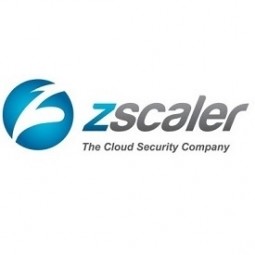Technology Category
- Analytics & Modeling - Real Time Analytics
- Cybersecurity & Privacy - Application Security
Applicable Industries
- Cement
- National Security & Defense
Use Cases
- Tamper Detection
- Traffic Monitoring
Services
- Cloud Planning, Design & Implementation Services
About The Customer
Housing Development Finance Corporation Ltd. (HDFC) is India’s largest home mortgage company, founded in 1977. With over 3 million customers, HDFC has a significant presence not only in India but also globally, with branches all over the world. The company is headquartered in Mumbai, India. HDFC's primary goal was to find a more efficient way to secure its web traffic against the constantly changing threatscape, given its large geographic footprint.
The Challenge
HDFC, India's largest home mortgage company, was facing a significant challenge with its legacy web security solution. The existing system was ineffective, only providing protection against known threats and requiring extensive maintenance for antivirus signatures. The system was not only difficult to maintain, but also costly, requiring significant investments in terms of time, manpower, and technology. The legacy solution scanned web traffic from all branches through a central gateway located at their head office, which was not cost-effective due to the need to backhaul traffic from all locations to a central point. Furthermore, the system was not effectively scanning advanced web-borne threats and those arising from increasing usage of Web 2.0 applications.
The Solution
HDFC adopted Zscaler's cloud-based web security solution, which provided comprehensive, policy-based security to all users, regardless of their location or device. HDFC's web traffic was forwarded from its gateway to the Zscaler cloud service, and policies were enforced seamlessly using Active Directory Group Policy. This solution reduced cost and infrastructure complexity, as HDFC administrators spent less time and money managing their web security infrastructure and proxies. The Zscaler solution also protected HDFC's users against a wide range of known malware as well as advanced threats such as malicious active content, botnets, and phishing attacks. The service enforced granular, user-based policies for Web 2.0 applications as it scanned every byte of data in real-time. Zscaler also provided HDFC with full visibility of its security posture through a visual dashboard and powerful, consolidated reporting, backed by Zscaler’s cloud-based log infrastructure.
Operational Impact
Quantitative Benefit

Case Study missing?
Start adding your own!
Register with your work email and create a new case study profile for your business.
Related Case Studies.

Case Study
System 800xA at Indian Cement Plants
Chettinad Cement recognized that further efficiencies could be achieved in its cement manufacturing process. It looked to investing in comprehensive operational and control technologies to manage and derive productivity and energy efficiency gains from the assets on Line 2, their second plant in India.

Case Study
Data Capture for Afghanistan Forces
Electronic equipments on the field of Afghanistan provided information on the status of the vehicle and to identify potential threats surrounding it to the British Force. The monitoring and interpretation of this data requires robust and sophisticated digitization for data capture and communication.

Case Study
Digital Transformation of Atlanta Grout & Tile: An IoT Case Study
Atlanta Grout & Tile, a Tile, Stone & Grout restoration company based in Woodstock, Georgia, was facing challenges with its traditional business model. Despite steady growth over the years, the company was falling behind the web revolution and missing out on the opportunity to tap into a new consumer base. They were using independent software from different vendors for each of their department information and workforce management. This resulted in a lot of manual work on excel and the need to export/import data between different systems. This not only increased overhead costs but also slowed down their response to clients. The company also had to prepare numerous reports manually and lacked access to customer trends for effective business decision-making.
Case Study
Enhancing Security and Compliance in Remitly's Global Money Transfer Service with Fastly
Remitly, an online remittance service, was faced with the challenge of securing its proprietary global transfer network. The company needed a security solution that could meet PCI requirements and protect customers' sensitive transactions through its mobile application. The solution had to be capable of defending against new and emerging attack types without impacting performance. Remitly also had to deal with irregular traffic patterns, such as a sudden spike in account transfers from a small network segment on the Pacific coastline of South America. The company needed to determine in real time whether such traffic indicated an attack or valid requests. A traditional web application firewall (WAF) would not be able to distinguish this traffic, potentially leading to customer frustration if the IP was blacklisted.

Case Study
Major Aerospace Company Automates Asset Management
The O&M division of an aerospace and global security company was using spreadsheets to manually track more than 3,000 assets assigned to students and staff. Maintaining audit trails for this high volume of equipment became increasingly time-consuming and challenging. The chore involved knowing precisely what equipment was on hand, what had been issued, its location and the name of the custodial owner of each item. Every aspect of this task was carried owner of each item. Every aspect of this task was carried out by individuals with spreadsheets. Manually documenting the full lifecycle of each asset added to the burden. This included tracking maintenance requirements and records, incidents and damages, repairs, calibrations, depreciation, and end-of-life data.








